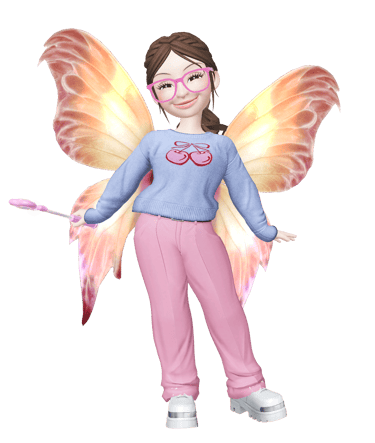Synthesis of Digital Learning and Leadership - EDLD-5320
Reimagining Education, Rediscovering Purpose
Embarking on the Master’s in Applied Digital Learning has been a deeply transformative experience. It not only allowed me to acquire new tools but also to redefine how I understand, live, and lead education. This journey taught me that learning is, above all, a human experience, one that expands when technology and pedagogy work in harmony toward a shared purpose: inspiring people to explore, create, and transform their world.


During this process, I realized that digital education does not replace in-person learning but rather amplifies it. Technology, when used with pedagogical intent and an ethical approach, becomes an extension of the teacher’s mind and heart, a bridge that connects students’ curiosity with authentic learning experiences. Thanks to contributions from authors such as Bates (2014), Garrison (2011), and Thomas & Seely Brown (2011), I came to understand that the challenge is not to teach with devices, but to teach with meaning in environments that integrate the human, the social, and the digital.
Each course in the program was an invitation to rethink teaching through student exploration, choice, and voice. The COVA (Choice, Ownership, Voice, Authentic Learning) and CSLE (Creating Significant Learning Environments) frameworks helped me reimagine the classroom as a space where learning is built in community, where each student assumes ownership of their process, and where mistakes are valued as opportunities for discovery (Harapnuik, 2015; Fink, 2013).
I also discovered that educational leadership requires empathy, vision, and a shared purpose. Authors like Sinek (2009) and Kotter (2012) guided me to understand that to lead is not to control, but to inspire trust and build culture. Instead of driving change through imposition, I learned to do it through inspiration, creating communities of educators who learn together, support one another, and enjoy the process.
From this learning experience, my innovation, Explorers of the Reading and Writing Forest, was born as a hybrid model that merges the warmth of the in-person classroom with the richness of digital environments. Today, I look back on this journey as one of purpose and hope. I have learned that digital education is not an end in itself, but an opportunity to further humanize teaching, reach places we hadn’t reached before, connect with students in new ways, and restore learning’s magic.


COVA Reflection & Application
COVA: A Philosophy That Transforms Learning Through Authenticity
Beginning this assignment is not just about answering a set of questions; it’s about opening the heart of my personal transformation. Throughout the Applied Digital Learning (ADL) program, I have walked a path where I not only learned new methodologies but also rediscovered my voice, reclaimed my agency, and reimagined my teaching practice through authenticity. The COVA approach, Choice, Ownership, Voice, and Authentic Learning, was not just another strategy; it was an invitation to rewrite the way we learn, teach, and lead. In this reflection, I share how autonomy, purpose-driven design, and deep reflection helped me grow into an educator who is more intentional, creative, and connected to both my community and my vision.
This space brings together my lived experience (Part A) and my future projections (Part B): how I embraced COVA and how I plan to implement it sustainably within my organization. My audience is you, fellow educators who, like me, are committed to building learning spaces that are meaningful, liberating, and rooted in human connection. I invite you to read this reflection with curiosity and openness. I hope this narrative inspires you to see that when an educator finds their voice, they become a bridge for students to discover their own. Because deep, lasting change doesn’t begin in policies or curricula, it begins with educators who teach with their hearts and choose to lead with authenticity.



This master’s program helped me understand that the future of education isn’t about choosing between in-person and digital but about weaving both worlds into a living network of possibilities that inspires all students, teachers, and leaders to continue exploring, dreaming, and learning together. Educating today means opening pathways of exploration that transform curiosity into knowledge, and knowledge into hope.
Innovation Project Update


Welcome to my Innovation Project: Explorers of the Forest of Reading and Writing.
This space represents the heart of my journey through the Applied Digital Learning (ADL) program a path of discovery, reflection, and transformation. Each course became a stepping stone that shaped not only my professional growth but also the creation of a living project where technology, language, and purpose intertwine.
Here, I invite you to explore how an idea planted as a seed of curiosity evolved into a forest of meaningful learning. Through every reflection, design, and challenge, I learned that innovation is not about tools or trends, but about creating experiences that connect minds and hearts.
As you navigate this section, you’ll find the milestones, lessons, and insights that have defined my innovation journey. My hope is that this blog will not only showcase the process but also inspire others to imagine what learning can become when led by purpose, creativity, and humanity.

References
Bruner, J. S. (1960). The process of education. Harvard University Press.
Dewey, J. (1938). Experience and education. Macmillan.
Dweck, C. S. (2006). Mindset: The new psychology of success. Random House.
Fink, L. D. (2013). Creating significant learning experiences: An integrated approach to designing college courses (2nd ed.). Jossey-Bass.
Fullan, M. (2011). Change leader: Learning to do what matters most. Jossey-Bass.
Harapnuik, D. (2018, October 18). Creating significant learning environments (CSLE) [Video]. YouTube. https://www.youtube.com/watch?v=eZ-c7rz7eT4
Harapnuik, D. K., Thibodeaux, T. N., & Cummings, C. D. (2018). Choice, ownership, and voice through authentic learning opportunities (COVA eBook). Lamar University. https://www.harapnuik.org/?page_id=7291
Siemens, G. (2005). Connectivism: A learning theory for the digital age. International Journal of Instructional Technology and Distance Learning, 2(1), 3–10.
